The secret to a great project is, of course, a great project team. But how do you build and manage a project team to get the best results every time? And what’s the difference between project teams that thrive, and the ones that struggle?
In this article, we’ll break down what makes an effective project team, the roles and responsibilities you need on your team, some tips for how to manage your team for success, and how the monday.com Work OS can help your project team thrive.
Get startedWhat is a project team?
A project team is the group of people who are responsible for implementing the tasks defined in the project scope, under the guidance of the project manager. For example, if you’re building a software product, then everyone involved in that specific product could be arranged as a project team.
Building a great project team and managing them effectively is the best way to make sure you deliver your projects on time and within budget. By grouping employees into project teams, you make sure that everyone involved in the project understands their role and responsibilities.
What makes a great project team?
While project teams can vary widely, in terms of everything from size to methodology, research suggests that top-performing teams share certain points in common:
1. They work to improve over time
The 16th State of Agile Report found that the majority (51%) of Agile professionals consider continuous improvement techniques to be a best practice for effective project teams.
Some examples of continuous improvement processes include:
- Conducting a post-mortem meeting when the project ends, to see what went well, what didn’t go well, and how you could do better next time
- Actively seeking customer feedback and using it to refine and inform your project planning processes
- Asking project team members to complete a poll sharing their feedback, and then using that feedback to make your team more effective next time
2. They excel at communication and collaboration
A study published in the Harvard Business Review examined the behavior of high-performing project teams – teams that regularly completed projects on time and rated themselves as highly effective – were substantially more likely to conduct efficient meetings, stay in touch regularly, and keep each other up-to-date with the project’s progress.
3. They know how to make decisions.
Projects can change frequently and decisions need to be made quickly. Successful project teams know how to make decisions rapidly. For instance, research by Scrum Inc., the home of the Scrum project methodology, found that the most effective project teams were able to reach a decision in an hour or less, whereas less successful teams took 5 hours or more.
Pro tip: The monday.com Work OS makes it easier to make quick decisions. Our project roadmaps and visual, high-impact project boards give you instant insight into the progress of a project, so you can spot issues and identify solutions together.
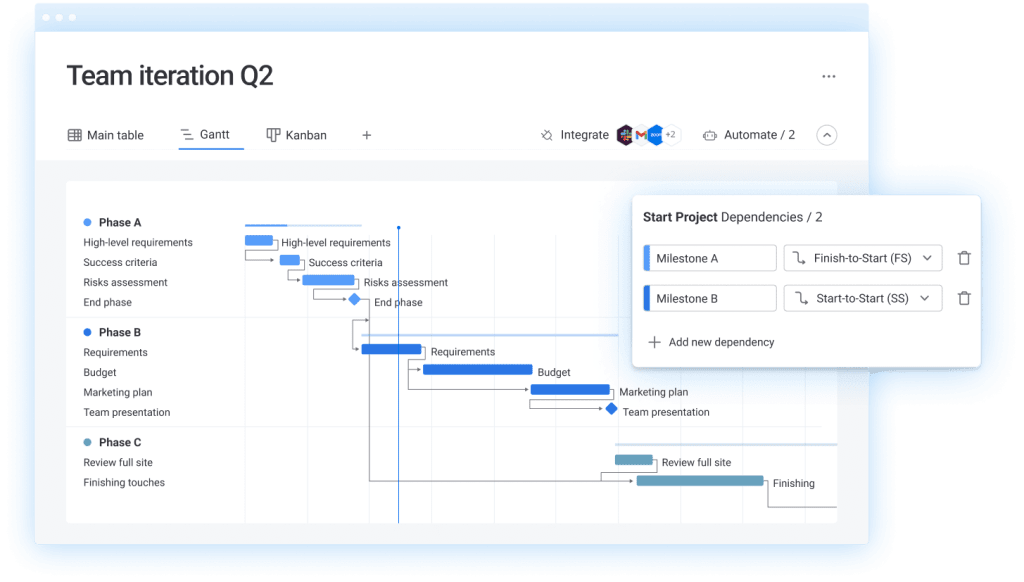
If you’ve decided to put together a project team to work on a specific project, your first task is going to be choosing the members of the team and assigning tasks and responsibilities. Let’s look at how to do that next.
Project team roles and responsibilities
Most project teams are fairly small, with just 6-10 people.

Within each team, every individual will have a different role and responsibilities. The exact make-up of your team will depend on your preferred project management approach. For instance, a Waterfall-style project will have a different project team than an Agile team. However, a general breakdown of a project team will look something like this:
Project Manager (PM): This person owns the project, defines the scope, and supervises the rest of the project team.
Responsibilities include:
- Planning and scoping the project
- Supervising the rest of the project team
- Monitoring the budget
- Tracking the progress of project deliverables
- Reporting project status to stakeholders
In an Agile team, this is called the Team Lead or Scrum Master, and it is less top-down than in more traditional project management set-ups. However, the core responsibility of the Team Lead is the same as that of a conventional PM – to keep the project moving forwards towards successful, timely delivery.
Integrator: If multiple teams are involved in working on a project, then you may also need an Integrator to help things go smoothly.
Responsibilities:
- Managing cross-team collaboration
- Maximizing operational efficiency across multiple teams
- Identifying and fixing siloes, bottlenecks, and duplicated tasks
Project Planner/Administrator: For longer or larger-scale projects, the PM may be supported by a planner or administrator.
Responsibilities:
- Monitoring daily tasks
- Supervising task status
- Trouble-shooting issues and bottlenecks
- Handling administrative tasks such as project documentation
- Supporting the Project Manager
Project Team Members: These are the people responsible for the delivery of the project itself. They tend to have technical expertise (designers, engineers, programmers, creatives, and so on).
Responsibilities:
- Building and optimizing the project deliverables
- Responding to customer feedback with project iterations and improvements
Product Owner: In Agile and Scrum teams, there will also be an additional team member called the Product Owner. This is often someone from the Product Management or Product Marketing functions within the organization, who has specialist knowledge of the end user and their pain points and preferences.
- Represents the “voice of the customer” during team meetings
- Provides advice and consultancy on customer needs and preferences
- Keeps the project focused on key customer priorities
Testers: This is a role most common in software development, but may also exist in other types of project, such as product development.
Responsibilities:
- Testing the project deliverables to identify bugs
- Spotting and alerting the project team about any quality issues
- Playing the role of the end user to ensure maximum customer satisfaction
Project sponsor: The project sponsor is usually a member of the company’s leadership team. Their role is to oversee the whole project from a level above the PM, and to secure buy-in for the project at an executive level.
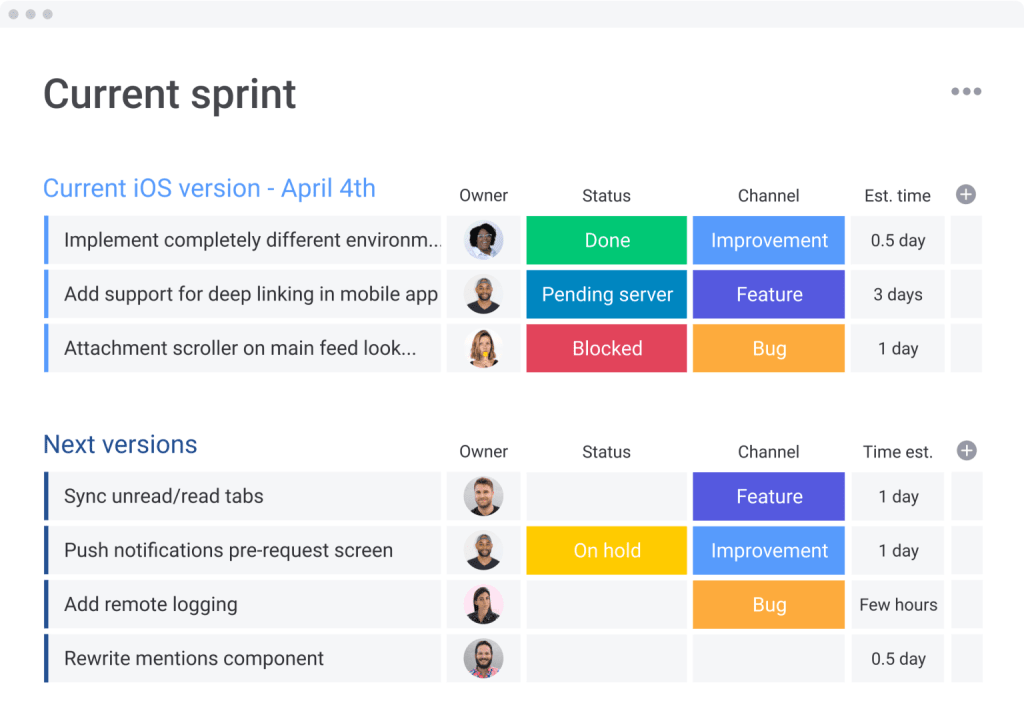
Once you’ve assembled your project team, then the focus becomes to optimize their performance by managing the team the right way.
Best practice tips for managing a project team
Kim Landau is a Project Manager Team Lead at monday.com. She shared some of her tips for managing a project team for better results:
1. Clarify project objectives
For Landau, one of the most important roles for the project manager is to keep the end in mind as the project changes and evolves. She’s keen to encourage her project teams to use their initiative and be creative, but, she cautions, “I want to make sure that the people who are initiating or coming up with the ideas are fully clear about what they are trying to achieve.” That way, you can keep your project team moving smoothly towards a shared outcome that will deliver maximum value to the end customer.
2. Think strategically
A key part of Landau’s role as a PM is to “look at the strategy level of projects,” and identify where there are opportunities to collaborate with other project teams to create a deliverable with greater long-term value.
“I do prefer to always try to think into the future,” she says. Instead of restricting her focus to the here and now, she also aims to consider whether the project objectives “will be relevant for us when we grow, or when things change.”
3. Communicate proactively
More than anything, Landau says, it’s her job to remain “on top of things all the time.” To support her project teams, she tries to “make sure that they have the information they need, that everyone knows what they need to do, and that we have a clear timeline.”
It’s this level of transparency and collaboration that can help ensure your team’s success. monday.com specifically addresses these priorities. Our visual, intuitive project boards make it easy to see how the team is doing, communicate about tasks and deliverables, and keep everyone on the same page.
How to use monday.com to manage your project team
monday.com was built to help project teams work together, plan efficiently, and save time with automations. Here are a few ways to use monday.com to help your project team thrive:
1. Keep an eye on top-level objectives with a project roadmap
monday.com’s visual project roadmap tools let you keep the whole project team on the same page, manage stakeholder expectations, and communicate easily with other teams and with one another.
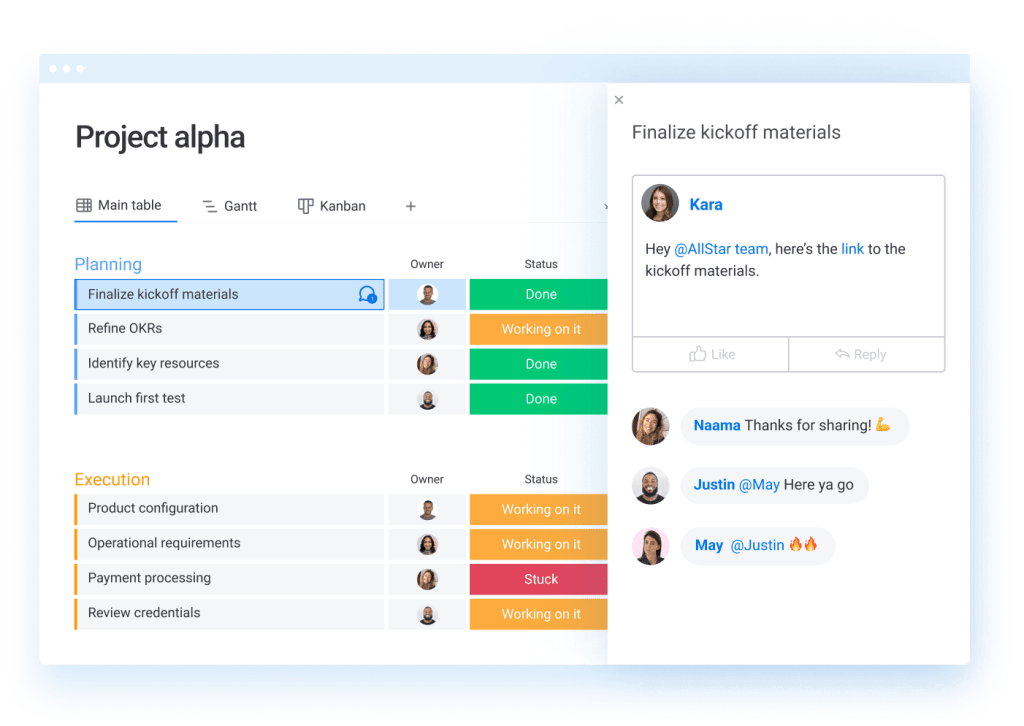
2. Automate repetitive tasks
Make your project team more efficient by using automations to accelerate your workflow. For instance, you can notify team members automatically every time the project changes, or remind them when due dates are coming up.
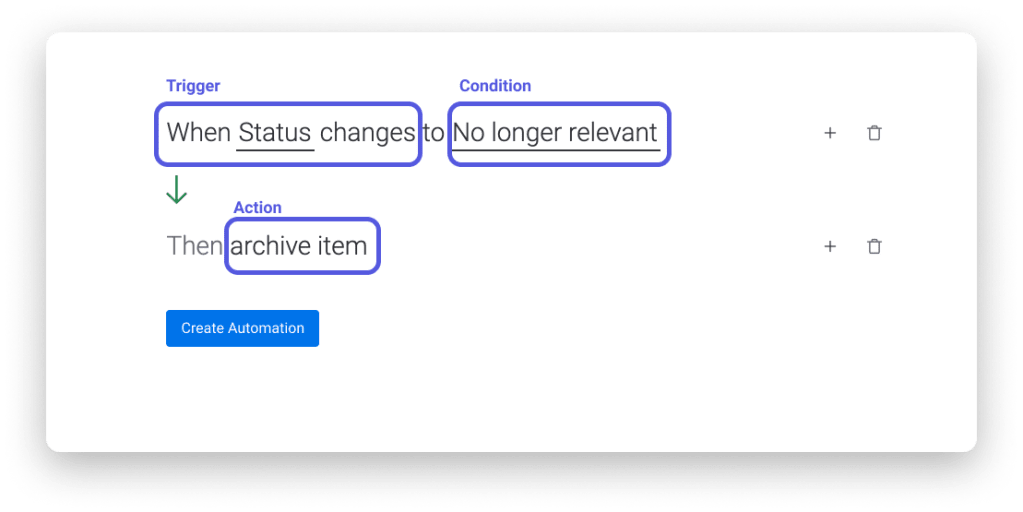
3. Make roles and responsibilities clear
Make sure everyone knows who should be doing what with the People Column. You can quickly assign tasks and subtasks to task owners, so everyone knows what they are supposed to be working on. This also makes it easy to track progress and spot roadblocks that might derail the project.
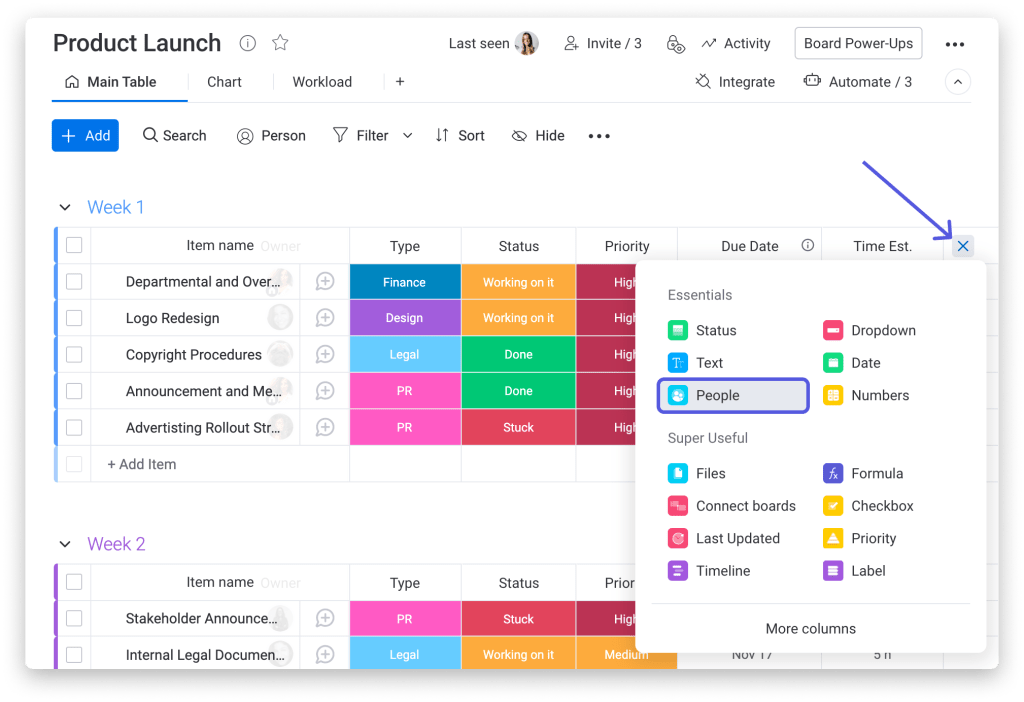
FAQs about project teams
1. What is a project team?
A project team is a group of people who have come together to work on delivering a project. Each member of the team has their own set of responsibilities and tasks, but they’re all working towards a shared objective.
2. How should a project team communicate?
Often! The key to an effective project team is regular communication. This can be through daily meetings, phone calls, or just chatting in an instant messaging app – the key is that your communication is frequent, relevant and on-going.
In the monday.com Work OS, we’ve made project team communication easy. You can quickly check on the status of the overall project or individual deliverables with our visually appealing boards, send messages to one another, and communicate any changes to deadlines or tasks automatically.
3. How do I manage a project team?
To manage a project team well, start by making sure that everyone involved in the project knows exactly what they’re supposed to be doing, and what their priorities and objectives are. Great project managers think strategically, communicate proactively, and use collaborative tools to keep everyone on the same page as the project progresses.
Help your project team thrive with monday.com
When it comes to managing a project team, monday.com gives you all the tools you need to succeed. To get started, check out our project management templates.
